Indian Polity: January 2023 UPSC Current Affairs | Current Affairs & Hindu Analysis: Daily, Weekly & Monthly PDF Download
Ladakh’s demand of Sixth Schedule
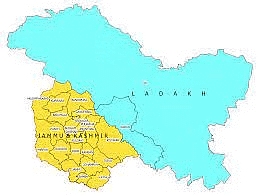
Why in News?
- Recently, India’s Union Home Ministry evaded a reply on Ladakh’s inclusion under Sixth Schedule of the Constitution.
Background of the issue
- Demand of UT:
- Buddhist-dominated Leh district had long demanded UT status because it felt neglected by the erstwhile state government, which was dominated by politicians from Kashmir and Jammu.
- Separation from J&K:
- On August 5, 2019, the former State of Jammu & Kashmir was bifurcated into two Union Territories — Jammu & Kashmir, and Ladakh, the latter without a Legislative Assembly.
Ladakh’s demand of Sixth Schedule
- About:
- After its special status was removed, several political groups in Ladakh have been demanding that land, employment, and the cultural identity of Ladakh, should be protected under the Sixth Schedule.
- Amending LAHDC Act:
- Ladakh’s only member in the Lok Sabha also demanded constitutional safeguards by amending the Ladakh Autonomous Hill District Council (LAHDC) Act for the protection of land, employment, and the cultural identity of Ladakh under the Sixth Schedule.
Other issues faced by Ladakh
- No decentralisation of power:
- There had been four MLAs from the region in the erstwhile J&K Assembly; the administration of the region is now completely in the hands of bureaucrats.
- To many in Ladakh, the government now looks even more distant than Srinagar.
- Changed domicile policy in Jammu and Kashmir:
- Also, the changed domicile policy in Jammu and Kashmir has raised fears in the region about its own land, employment, demography, and cultural identity.
- Limited Finances:
- The UT has two Hill councils in Leh and Kargil, but neither is under the Sixth Schedule.
- Their powers are limited to collection of some local taxes such as parking fees and allotment and use of land vested by the Centre.
- Recommendation of the National Commission for Scheduled Tribes:
- In September 2019, the National Commission for Scheduled Tribes recommended the inclusion of Ladakh under the Sixth Schedule.
- The Commission took note of the fact that the newly created Union Territory of Ladakh is predominantly a tribal region in the country.
- Report highlights of the Parliamentary Standing Committee:
- The Parliamentary Standing Committee on Home Affairs recently tabled a report in the Rajya Sabha.
- The report stated that, according to the 2011 Census, the tribal population in the Union Territory of Ladakh is 2,18,355, that is 79.61% of the total population of 2,74,289.
- Special Status:
- The committee recommended that special status may be granted to the Union Territory of Ladakh considering the developmental requirements of the tribal population.
- Examining the possibility of fifth or sixth Schedule:
- The Committee further recommends that the possibility of including Ladakh in fifth or sixth Schedule may be examined.
Centre’s opinion
- Ensuring overall development:
- Union Home Ministry opines that the main objective of the inclusion of tribal populations under the said schedule is to ensure their overall socio-economic development, which the Union Territory’s administration “has already been taking care of since its creation”.
- Direct recruitment:
- It added that the Ladakh administration had recently increased the reservation for Scheduled Tribes in direct recruitment from 10% to 45%, which would help the tribal population significantly in its development.
Scope for Ladakh’s inclusion in Sixth Schedule
- Notes from the other states:
- Notably, no region outside the Northeast has been included in the Sixth Schedule.
- In fact, even in Manipur, which has predominantly tribal populations in some places, the autonomous councils are not included in the Sixth Schedule.
- Nagaland and Arunachal Pradesh, which are totally tribal, are also not in the Sixth Schedule.
- Difficulty:
- The Constitution is very clear, Sixth Schedule is for the Northeast. For tribal areas in the rest of the country, there is the Fifth Schedule.
- So, Ladakh’s inclusion in the Sixth Schedule would be difficult.
13th National Voters’ Day
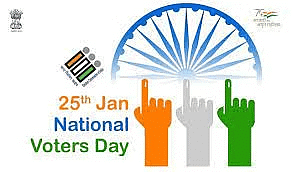
Why in News?
- Election Commission of India is celebrating 13th National Voters’ Day (NVD) on 25th January 2023.
What are the Key Points of NVD 2023?
- Theme: Nothing Like Voting, I Vote for Sure.
- Awards 2023: National Awards for the Best Electoral Practices were presented to State and District level officers for their outstanding performance in the conduct of elections during 2022.
- About NVD:
- The main objective behind the celebration is to encourage, facilitate, and maximize enrolment, especially for new voters.
- The day has been celebrated every year since 2011 across the country to mark the foundation of the Election Commission of India (25th January 1950).
- It not only encourages the youth to participate in the electoral process but also focuses that the Right to vote as the basic right.
- NVD is a significant root of India as the future of the country lies in the leader that we choose.
What is the Election Commission of India?
- The Election Commission of India (ECI) is an autonomous constitutional authority responsible for administering Union and State election processes in India.
- ECI was established on 25th January 1950.
- The body administers elections to the Lok Sabha, Rajya Sabha, State Legislative Assemblies, and the offices of the President and Vice President in the country.
- Structure of the Commission:
- Originally the commission had only one election commissioner but after the Election Commissioner Amendment Act 1989, it has been made a multi-member body.
- The commission presently consists of one Chief Election Commissioner (CEC) and two Election Commissioners (ECs).
- The secretariat of the commission is located in New Delhi.
Supreme Court on Freedom of Speech of Ministers
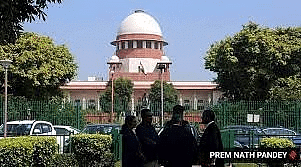
Why in News?
- Recently, a Constitution Bench of the Supreme Court unanimously and rightly ruled out any additional curbs on free speech by ministers.
What is the Background?
- The case (Kaushal Kishor v the State of UP), relates to the Bulandshahar rape incident of 2016, in which the then Minister of the State termed the incident a ‘political conspiracy and nothing else’.
- A writ petition was filed by the survivors before the SC and the court raised an important question: “Can restrictions be imposed on a public functionary's freedom of speech and expression?”.
What is the Judgement of the Court?
Majority Judgement
- On Reasonable Restrictions:
- Like other citizens, ministers are guaranteed the right to freedom of expression under Article 19(1) (a), governed by the reasonable restrictions laid out in Article 19(2) — and those are enough.
- Because “The role of the court is to protect fundamental rights limited by lawful restrictions and not to protect restrictions and make the rights residual privileges.”
- On Collective Responsibility:
- The majority ruling also made a valid distinction on the government’s vicarious responsibility for ill-judged or hateful remarks made by its individual ministers.
- The flow of stream in collective responsibility is from the Council of Ministers to the individual ministers.
- The flow is not on the reverse, namely from the individual ministers to the Council of Ministers.
- It is not possible to extend the concept of collective responsibility to “any and every statement orally made by a Minister outside the House of the People/Legislative Assembly”.
- Statement by an Individual Minister:
- The court also addressed the question of whether the statement of a minister, that is inconsistent with the fundamental rights of citizens, can result in a constitutional tort.
- A constitutional tort is a legal tool that provides for the state to be held vicariously accountable for the actions of its agents.
- A mere statement by a minister that goes against an individual’s fundamental rights may not be actionable, but becomes actionable if it results in actual harm or loss.
Dissenting Judgement
- Over a Hateful Public Discourse:
- The minority judgment expresses concern over a hateful public discourse - “hate speech, whatever its content, denies people dignity”.
- It speaks of the special duty of public functionaries and other persons of influence to be more responsible and restrained in their speech, to “understand and measure their words”.
- On Collective Responsibility:
- It is possible to attribute vicarious responsibility to the government if a minister’s view represents that of the government and is related to the affairs of the state.
- If such a statement is not consistent with the view of the Government, then it is attributable to the Minister personally.
- Statement by an Individual Minister:
- It holds the view that there should be a proper legal framework to define acts and omissions that amount to ‘constitutional tort’.
What is Article 19?
Article 19 of the Constitution of India guarantees the right to freedom of speech and expression, and is typically invoked against the state.
- Article 19(1) in The Constitution Of India 1949, All citizens shall have the right
- to freedom of speech and expression;
- to assemble peaceably and without arms;
- to form associations or unions;
- to move freely throughout the territory of India;
- to reside and settle in any part of the territory of India; and omitted
- to practise any profession, or to carry on any occupation, trade or business.
- Article 19(2) in The Constitution of India 1949,
- Nothing in sub clause (a) of clause (1) shall affect the operation of any existing law, or prevent the State from making any law, in so far as such law imposes reasonable restrictions on the exercise of the right conferred by the said sub clause in the interests of the sovereignty and integrity of India, the security of the State, friendly relations with foreign States, public order, decency or morality or in relation to contempt of court, defamation or incitement to an offence.
Way Forward
- There are enough provisions in the statute book to deal with speech that promotes enmity and violence or results in cramping the freedoms of others.
- A lack of political will and a lack of political resolve by governments to act on hate speech, particularly when it involves one of their own, is the major problem, and there are no legal shortcuts to overcome it.
- A government can weaponize the same legal provisions that are designed to curb hate speech against citizens who disagree or dissent.
- The Parliamentary privileges are conferred on the members for the smooth functioning of the parliament. But these rights should always be in conformity with the fundamental rights because they are our representatives and work for our welfare.
- If the privileges are not in accordance with the fundamental rights, then the very essence of democracy for the protection of the rights of the citizen will be lost.
Centre Vs Union
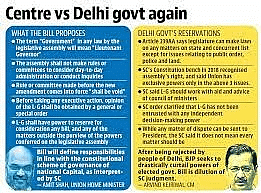
Why in News?
Since the Tamil Nadu government shunned the usage of the term ‘Central government’ in its official communications by replacing it with ‘Union government’, it has erupted the Union Vs Centre Debate.
- It has been seen as a major step towards regaining the consciousness of Indian Constitution.
What is Central Government technically?
- Even though we have no reference to the ‘Central government’ in the Constitution, the General Clauses Act, 1897 gives a definition for it.
- The ‘Central government’ for all practical purposes is the President after the commencement of the Constitution.
What was the intent of our constitutional makers?
- Initially, the objective resolution wanted to create India as a Union of territories willing to join the “Independent Sovereign Republic”.
- Many members were of the opinion that the principles of the British Cabinet Mission Plan (1946) be adopted. It contemplated a Central government with very limited powers whereas the provinces had substantial autonomy.
- The Partition and the violence of 1947 in Kashmir forced the Constituent Assembly to revise its approach and resolve it in favour of a strong Centre.
- The possibility of the secession of states from the Union weighed on the minds of the drafters of the Constitution and ensured that the Indian Union was “indestructible”.
- Hence the term “Union of States” was chosen.
- The members wanted to make it clear that though India was to be a federation, it was not the result of an agreement and that therefore, no State has the right to secede from it.
Why was the term ‘Centre’ or Central Government’ avoided?
Term union instead of the federation got some criticism from members like Hasrat Mohani on the following grounds:
- The usage of the words ‘Union of States’ would obscure the word ‘Republic’
- It might create India into a despotic union like Germany at the time of Adolf Hitler
- It would undermine federalism and bring all the units, the provinces and the groups of States under the thumb of the Centre.
- The members of the Constituent Assembly intended to keep away the tendency of centralising of powers in one unit.
- The term ‘Union government’ or the ‘Government of India’ has a unifying effect as the message sought to be given is that the government is of all.
- Both the Union and the States are created by the Constitution, both derive their respective authority from the Constitution. None is subordinate to the other in its own field.
- For instance, the judiciary is designed in the Constitution to ensure that the Supreme Court has no superintendence over the High Courts.
- Though the Supreme Court has appellate jurisdiction over High Courts and other lower courts, they are not declared to be subordinate to it.
Right to Strike
 Why in News?
Why in News?
The Kerala High Court has reiterated that government employees who participate in general strikes, affecting the normal life of the public and Public Exchequer, are not entitled to be protected under Article 19(1)(c) of the Constitution and are also a violation of the provisions of the Kerala Government Servants’ Conduct Rules, 1960.
What is Right to Strike?
- About:
- Strike is the collective refusal by employees to work under the conditions required by employers. Strikes arise for a number of reasons, though principally in response to economic conditions (defined as an economic strike and meant to improve wages and benefits) or labour practices (intended to improve work conditions).
- In each country whether it is democratic, capitalist, socialist, give the right to strike to the workers. But this right must be the weapon of last resort because if this right is misused, it will create a problem in the production and financial profit of the industry.
- This would ultimately affect the economy of the country.
- In India, the right to protest is a fundamental right under Article 19 of the Constitution of India.
- But right to strike is not a fundamental right but a legal right and with this right statutory restriction is attached in the Industrial Dispute Act, 1947.
- The Industrial Dispute Act, 1947 is subsumed under The Industrial Relations Code, 2020.
- Position in India:
- In India, unlike America, the right to strike is not expressly recognized by the law.
- The trade union Act, 1926 for the first time provided limited right to strike by legalizing certain activities of a registered trade union in furtherance of a trade dispute which otherwise breach of common economic law.
- Nowadays a right to strike is recognized only to a limited extent permissible under the limits laid down by the law itself, as a legitimate weapon of Trade Unions.
- The right to strike in the Indian constitution set up is not an absolute right but it flows from the fundamental right to form a union.
- As every other fundamental right is subject to reasonable restrictions, the same is also the case to form trade unions to give a call to the workers to go on strike and the state can impose reasonable restrictions.
- Right to strike under International Convention:
- Right to strike has also been recognised by the conventions of the International Labour Organization (ILO).
- India is a founder member of the ILO.
What are the Important Supreme Court Judgements related to Right to Strike?
- The Supreme Court in Delhi Police v. Union of India (1986) upheld the restrictions to form association by the members of the non-gazetted police force after the Police Forces (Restriction of Rights) Act, 1966, and the Rules as amended by Amendment Rules, 1970, came into effect.
- In T.K. Rangarajan v. Government of Tamil Nadu (2003), the Supreme Court held that the employees have no fundamental right to resort to strike. Further, there is prohibition to go on strike under the Tamil Nadu Government Servants’ Conduct Rules, 1973.
Census
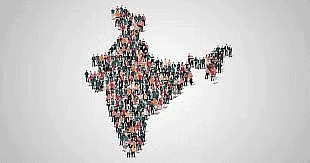
Why in News?
- Recently, the government has extended the date for states and Union territories to finalise their administrative boundaries by June 2023, which may delay the Census 2021 Exercise.
- During a Census operation – both the house-listing phase and the population enumeration — the states and Union territories are not supposed to change the boundaries of districts, towns, villages and tehsils.
What are the Implications of Delay?
- Affect Political Representation:
- Census are used to determine the number of seats to be reserved for SCs and STs in Parliament, State legislatures, local bodies, and government services.
- Therefore, delay in the Census means that the data from the 2011 Census would continue to be used.
- In many towns and even panchayats that have seen rapid changes in the composition of their population over the last decade, this would mean that either too many or too few seats are being reserved.
- Delimitation of Of Constituency:
- Delimitation of parliamentary and Assembly constituencies would continue to be based on 2001 Census till data from a Census after 2026 are published.
- Unreliable Estimates on Welfare Measures:
- The delay will impact government schemes and programmes, and would result in unreliable estimates from other surveys on consumption, health and employment, which depend on census data to determine policy and welfare measures.
- As many as 100 million people are likely being excluded from the government’s food subsidy programme—the Public Distribution System (PDS)—as the population figures used to calculate the number of beneficiaries are from the 2011 census.
- Impact Houselisting:
- It takes nearly a year to prepare an abridged house list for the entire country which the enumerator uses to locate an address.
- The main purpose of the houselisting is to prepare a list of all households that are to be surveyed before undertaking population enumeration, besides providing data on housing stock, amenities and the assets available with each of the households.
- The population enumeration follows the houselisting after a year.
- So, for Census 2011, the government conducted houselisting between April and September 2010, and the population enumeration in February 2011.
- Houselisting is important because unlike the US, India does not have a robust address system.
- Migration:
- The images of migrant workers rushing out of the cities and walking the highways towards their villages during the first COVID lockdown brought their plight to the spotlight and raised queries on the numbers, causes and patterns of migration, which could not be answered using outdated 2011 Census data.
- For example, the Centre had no answers on how many migrants were likely to be stranded in each city or State and in need of food relief or transport support.
- The new Census is likely to capture the extent of the observed movement in migration trends towards smaller two-tier towns apart from the large metropolitan centres.
- It could help answer questions of what kind of healthcare and social services are most needed for migrants and where.
How is the 2021 Census being Different from Previous ones?
- For the first time the data is collected digitally via mobile applications (installed on enumerator’s phone) with a provision of working in offline mode.
- The Census Monitoring & Management Portal will act as a single source for all officers/officials involved in Census activities to provide multi-language support.
- First time that information of a person from the Transgender Community and members living in the family will be collected.
- Earlier there was a column for male and female only.
What is the Census?
- Definition:
- Population Census is the total process of collecting, compiling, analyzing and disseminating demographic, economic and social data pertaining, at a specific time, of all persons in a country or a well-defined part of a country.
- Census is the basis for reviewing the country's progress in the past decade, monitoring the ongoing schemes of the government and plan for the future
- It provides an instantaneous photographic picture of a community, which is valid at a particular moment of time.
- The census also provides the trends in population characteristics.
- Frequency:
- The exercise is undertaken every 10 years in India.
- The first complete census of an Indian city was conducted in 1830 by Henry Walter (known as the father of the Indian Census) in Dacca.
- First non-synchronous Census was conducted in India in 1872 during the reign of Governor-General Lord Mayo.
- The first synchronous census was taken in 1881, by W.C. Plowden, Census Commissioner of India. Since then, censuses have been undertaken uninterruptedly once every ten years.
- Other Countries:
- Every 10 years in many countries (Ex. United States and Britain) and every five years (Ex. Canada, Japan) or at irregular intervals in some countries.
- Nodal Ministry:
- The decennial Census is conducted by the Office of the Registrar General and Census Commissioner, Ministry of Home Affairs.
- Until 1951, the Census Organisation was set up on an ad-hoc basis for each Census.
- Legal/Constitutional Backing:
- Census is conducted under the provisions of the Census Act, 1948.
- The bill for this Act was piloted by Sardar Vallabhbhai Patel, the then Home Minister of India.
- The population census is a Union subject under Article 246 of India Constitution.
- It is listed at serial number 69 of the seventh schedule of the constitution.
- Confidentiality of Information:
- The information collected during the population Census is so confidential that it is not even accessible to the courts of law.
- The confidentiality is guaranteed by the Census Act, 1948. The law specifies penalties for both public and census officials for non-compliance or violation of any provision of the Act.
What is the Significance of the Census?
- Source of Information:
- The Indian Census is the largest single source of a variety of statistical information on different characteristics of the people of India.
- Researchers and Demographers use census data to analyze growth and trends of population and make projections.
- Good Governance:
- The data collected through the census is used for administration, planning and policy making as well as management and evaluation of various programmes by the Government.
- Demarcation:
- Census data is also used for demarcation of constituencies and allocation of representation to Parliament, State legislative assemblies and the local bodies.
- The Census data are also used to determine the number of seats to be reserved for SCs and STs in Parliament, State legislatures, local bodies, and government services.
- In case of panchayats and municipal bodies, reservation of seats for SCs and STs is based on their proportion in the population.
- Better Access for Businesses:
- The census data is also important for business houses and industries for strengthening and planning their business for penetration into areas, which had hitherto remained, uncovered.
- Giving Grants:
- The Finance Commission provides grants to the states on the basis of population figures available from the Census data.
Assisted Reproductive Technology (ART)
Why in news?
According to the Kerala High Court, deciding whether to start a family is a fundamental right and placing an age restriction on it is a restriction that has to be reviewed.
About Assisted Reproductive Technology
- This definition states that all fertility therapies that deal with either eggs or embryos are considered to be ART. In general, ART treatments entail surgically removing eggs from a woman’s ovaries, fertilizing them in a lab with sperm, and either putting them back into her body or giving them to another woman.
- They exclude procedures where only sperm are treated (such as intrauterine—or artificial—insemination) or where a woman takes medication solely to increase egg production without intending to have eggs extracted.
Concern Associated
- When deciding on a number of petitions contesting the age requirement of 50 for women and 55 for men set forth in the Assisted Reproductive Technology (ART) (Regulation) Act, 2021, for undergoing assisted reproductive technology, the court issued the directive.
- The petitioners contend that the ART Act’s Section 21(G) prescription of the upper age restriction is arbitrary, unjustified, and a violation of their right to reproduction, which is recognized as a basic right.
- They attempted to have it ruled unconstitutional.
- The National Assisted Reproductive Technology and Surrogacy Board has been instructed by the High Court to inform the Union government that the maximum age limit for utilizing assisted reproductive technology has to be reviewed.
- In addition, the petitioners have contested the clause that includes medical professionals in the scope of the Indian Penal Code (IPC) and makes offenses cognizable.
- Due to the threat of legal action, these regulations are having a chilling effect on IVF practitioners across the nation, preventing them from carrying out their professional responsibilities.
About the Assisted Reproductive Technology (Regulation) Act, 2021
Legal Requirements
- A system for implementing the ART (Regulation) Act 2021 is provided.
- By establishing the National Assisted Reproductive Technology and Surrogacy Board, the ART (Regulation) Act 2021 offers a structure for carrying out the surrogacy law.
- The Act aims at regulating and monitoring ART clinics and banks, preventing misuse, and ensure the safe and moral provision of ART services.
Art Services are As Follows
- The Act defines ART as any method that attempts to conceive a child by handling the sperm or oocyte (immature egg cell) outside of the body and transferring the gamete or embryo into the female reproductive system.
- These include gestational surrogacy, in vitro fertilization (IVF), and sperm or egg gamete donation.
The following channels will offer ART services
- ART banks, which collect, filter, and store gametes, as well as
- ART clinics, which provide ART-related treatments and procedures.
Donor Eligibility Requirements
- Males and females between the ages of 21 and 55 may provide semen, and females between the ages of 23 and 35 may provide eggs. Only one egg donation is allowed per woman’s lifetime, and no more than seven eggs may be taken from her.
- A bank is not allowed to provide a single donor’s gametes to more than one commissioning party (i.e., couples or single women seeking services).
Conditions for Offering Services
- Only with the donor’s and commissioning parties’ written approval may ART treatments be performed. In order to protect the egg donor, the commissioning party must provide insurance (for any loss, damage, or death).
Rights of a Child Born Through ART
- A Child Born Through ART Will Be Considered a Biological Child Of The Commissioning Couple And Will Be Entitled To The Rights And Privileges Available To A Natural Child Of The Commissioning Couple. A donor won’t have any parental responsibilities for the child.
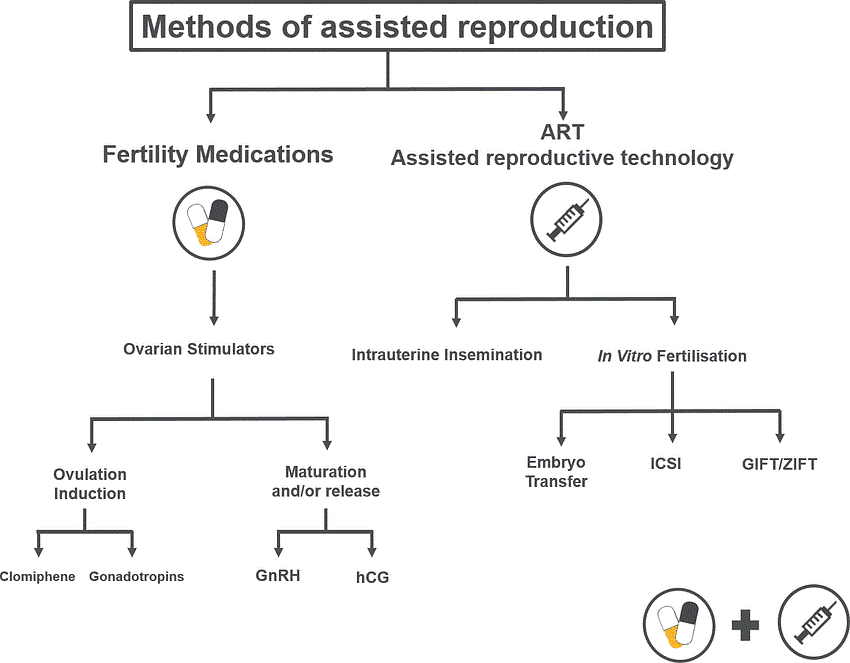
Assisted Reproductive Technology (ART)
Shortcomings
- Unmarried and heterosexual couples are excluded
- The Act prohibits transgender people, married or unmarried homosexual couples, divorced or widowed homosexual couples, and unmarried but cohabiting heterosexual couples from utilizing ART services.
- This exclusion is important since the Surrogacy Act forbids the aforementioned individuals from using surrogacy as a means of reproduction.
- Reduces Reproductive Options
- The Act is only applicable to commissioning couples who are infertile, or who have been unable to conceive after a year of unprotected coitus. The reproductive options of individuals who are excluded are thus much diminished and its applicability is constrained.
- Prices are not regulated, but this is something that can be fixed with a few straightforward instructions.
Way ahead
- Independent groups, not clinic ethics committees, should give the required counseling, not patients.
- The directives of the federal and state governments should be binding on all ART entities since they serve the national interest, good relations with other countries, and the public interest.
- Prior to having an impact on millions, all raised constitutional, medico-legal, ethical, and regulatory concerns must be carefully examined.
Draft Norms Announced by UGC for Foreign Universities
Why in News?
- The University Grants Commission (UGC) has announced draft norms for facilitating foreign universities and educational institutions to set up campuses in India which allow them autonomy in decision making.
What are the Draft Norms Announced by the UGC?
- Sets Criteria:
- A foreign university with a rank among the top 500 global rankings or a foreign educational institution of repute in home jurisdiction can apply to the UGC to set up a campus in India.
- Application Process:
- The application will be considered by a standing committee appointed by the UGC which will submit its recommendations within 45 days after examining the institution’s credibility, programmes offered, their potential.
- Subsequently, within 45 days, the UGC may grant in-principal approval to the foreign institution to set up campuses in India within two years.
- The initial approval will be for 10 years, which can be extended.
- Mode of Teaching:
- It will also have autonomy to recruit faculty and staff from India and abroad.
- The courses to be offered cannot be in online and open and distance learning mode.
- The qualifications awarded to the students in the Indian campus should have equivalence with those awarded by the institutions in their country of origin.
- Such universities and colleges cannot offer any such programme of study which jeopardises the national interest of India or the standards of higher education in India.
- Fund Management:
- Foreign universities will be allowed to repatriate funds to parent campuses.
- Cross-border movement of funds and maintenance of Foreign Currency Accounts, mode of payments, remittance, repatriation, and sale of proceeds, if any, will be as per the Foreign Exchange Management Act (FEMA) 1999 and its Rules.
- It will also have the autonomy to decide its fee structure, and will face no caps that are imposed on Indian institutions. The fee should be “reasonable and transparent.
What is the Significance of the Move?
- Nearly 13 lakh students were studying abroad in 2022 according to the Ministry of External Affairs data; and as per the RBI, Rs 5 billion was lost in foreign exchange due to students going overseas in FY 2021-2022
- Allowing foreign universities to set-up campuses in India will also ensure that all our students — there are around 40 million pursuing higher education — have access to global quality education.
- The ideal of setting up foreign universities’ campuses in India is also mentioned in the National Education Policy (NEP) 2020.
- The NEP says that the top 100 universities in the world will be facilitated to operate in India through a legislative framework.
- In a way, the draft regulations released only seek to institutionalize the NEP’s vision.
- This move will pave the way for India to become a global destination for education.
- It will not only help prevent brain drain and loss of forex due to Indian students studying overseas, but also help to attract overseas students to India.
- It will encourage competition among various players in the country, and allow faculty to faculty research collaboration among various universities.
- After Chinese students, Indians are the largest category of foreign students in countries like the U.S., the U.K. and Australia.
What are the Concerns?
- It is believed that the social justice concerns have been ignored which is very important in our context where higher education is very effective means for social change.
- Draft regulations have no provisions for caste-based/economic-based/minority-based/armed forces-based/Divyang-based/Kashmiri migrants/representation-based/women reservation in student admissions.
- Section of educational practitioners has expressed reservations about allowing international universities to operate in India as it would raise the cost of education, rendering it out of reach for a large part of the population.
- Repatriation of funds to the parent institution abroad, which was prohibited previously, has also been allowed.
- There’s also no requirement for foreign education providers to maintain a corpus fund to operate in India.
Way Forward
- If the Indian higher education sector truly opens up, it will be one step forward in India’s aspiration to become a knowledge society again, if not actually a Vishwa-guru.
- Not protectionism and shuttering our intellectual borders, but competition and collaboration with the best will help usher in a true Indian renaissance.
|
44 videos|5271 docs|1113 tests
|
FAQs on Indian Polity: January 2023 UPSC Current Affairs - Current Affairs & Hindu Analysis: Daily, Weekly & Monthly
| 1. What is the demand of Ladakh regarding the Sixth Schedule? |  |
| 2. What is the significance of the 13th National Voters' Day? |  |
| 3. What did the Supreme Court say about the freedom of speech of ministers? |  |
| 4. What is the Centre Vs Union issue? |  |
| 5. What is the right to strike and its significance? |  |

















